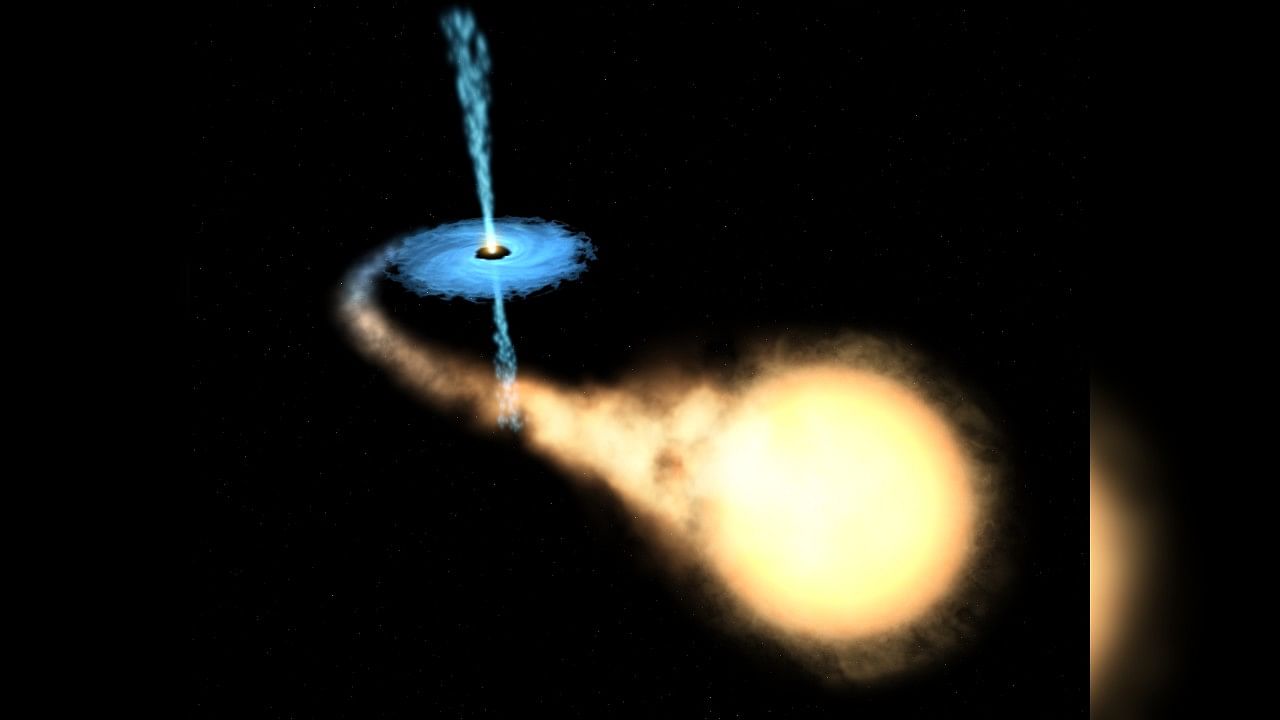
An artist's impression of X-ray Binary.
Credit: Wikimedia Commons/ESA/Hubble
Bengaluru: A team of Indian astrophysicists has used observations from AstroSat1 the country’s first dedicated space astronomy observatory—to discover aperiodic modulation of high-energy X-ray photons in Swift J1727.8-1613, a black hole binary source.
A black hole X-ray binary (BH-XRB) system consists of a black hole and a companion star that are locked in gravitation. The black hole pulls matter off the star, forming a luminous accretion disk. This matter, as it falls towards the black hole through the accretion disk, touches temperatures in millions of degrees and emits high-energy X-rays.
With these electromagnetic radiations that detect black holes, BH-XRBs also unravel the processes of accretion (the increase in mass of celestial objects caused by gravitational forces).
The observations revealed that the Quasi-Periodic Oscillation (QPO) frequency of high-energy photons increased from 1.4 Hz to 2.6 Hz over seven days, during an outburst phase of the BH-XRB. The Indian Space Research Organisation (ISRO) said on Monday that the “unique phenomenon” was detected for the first time in a BH-XRB.
QPOs throw light on the black holes’ gravitational strength and help understand their fundamental properties and accretion dynamics in greater detail.
The discovery was reported in the international journal Monthly Notices of the Royal Astronomical Society by astrophysicists from the U R Rao Satellite Centre/ISRO, Indian Institute of Technology Guwahati, University of Mumbai, and Tata Institute of Fundamental Research.
Swift J1727.8-1613 was discovered by NASA’s Swift Burst Alert Telescope in August 2023 and subsequently, identified as one of the brightest sources. AstroSat observed the source for the first time on September 2; later, week-long observations were done between September 8 and 14.
ISRO said the astrophysicists utilised the Large Area X-ray Proportional Counter onboard AstroSat to examine the QPO variability at higher energies. They also used observational data from the Neutron Star Interior Composition Explorer—a payload onboard the International Space Station—to understand the spectral energy distribution of the source.